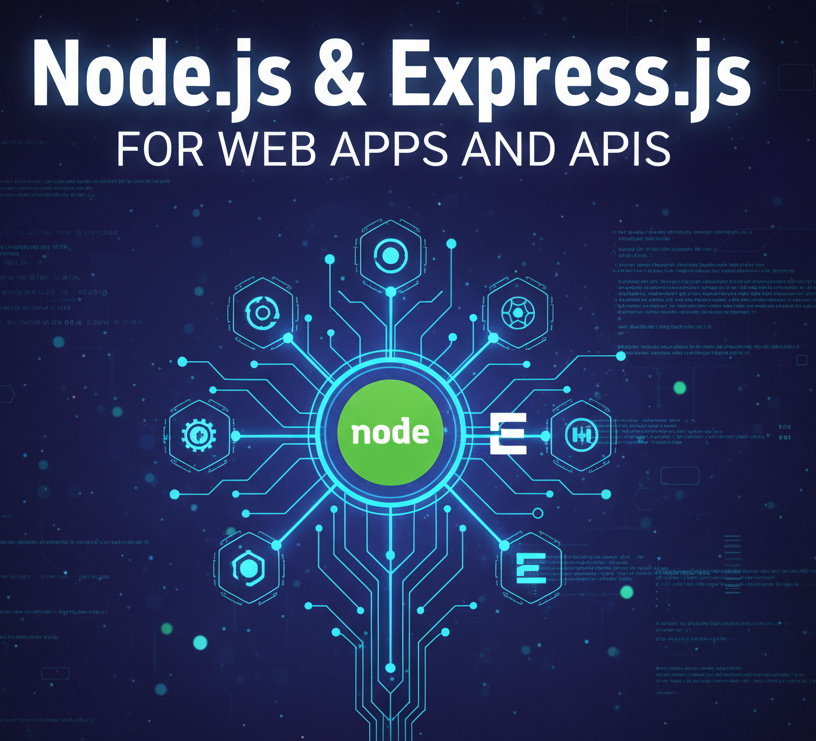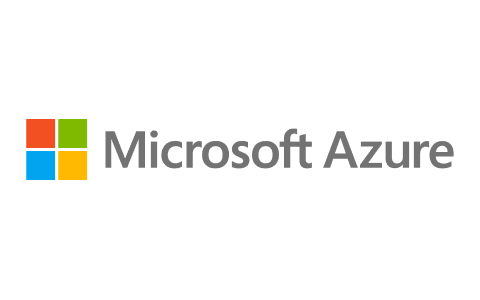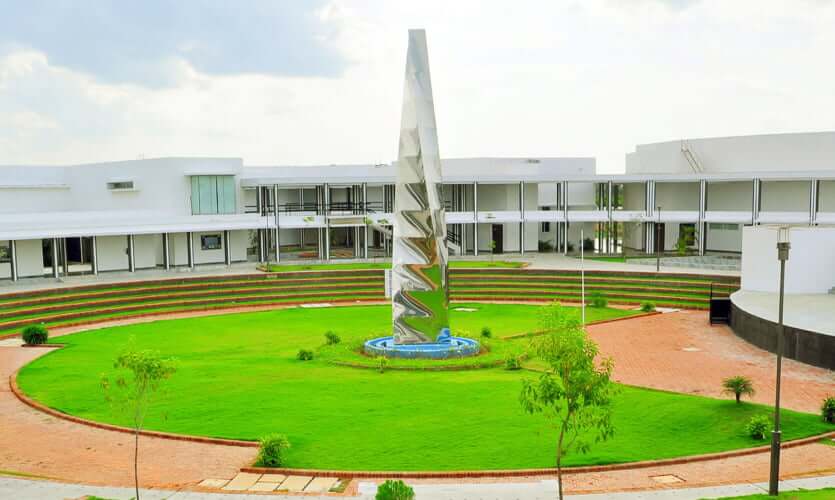- Great Learning
- Free Courses
- Cloud Computing
Earn a certificate & get recognized
Cloud Computing Architecture
Learn cloud computing architecture from basics in this free online training. Cloud computing architecture course is taught hands-on by experts.Learn how does cloud computing works and types of cloud computing deployment in details
Instructor:
Mr. Anirudh RaoCloud Computing Architecture
27.5K+ learners enrolled so far
Stand out with an industry-recognized certificate
10,000+ certificates claimed, get yours today!
Get noticed by top recruiters
Share on professional channels
Globally recognised
Land your dream job

Skills you will gain
Basics of Cloud Computing
Cloud Computing Platforms
Types of cloud deployment
Cloud Computing Architecture
Key Highlights
Get free course content
Master in-demand skills & tools
Test your skills with quizzes
About this course
The Cloud Computing domain is a very demanding and complex domain to choose for your career. You will understand the fundamentals of Cloud Computing, its architecture, and cloud deployment types. This course will teach you the working model of cloud computing. Next, you will be introduced to various cloud computing platforms that provide thousands of services. Moving ahead, you will learn about different approaches to cloud deployment. The knowledge gained through the course will make you familiar with the architecture of cloud computing. You will be awarded a course completion certificate after taking the quiz at the end of the course.
Are you up for advancement in your cloud computing skills? Make no delay and choose one of our best Cloud Computing courses that lets you gain in-demand skills and start your successful journey in this domain.
Course outline
How does Cloud Computing Works?
In this module, you will understand the two main divisions of cloud computing, frontend and backend, that contributes to the working model of cloud computation. The tutor will brief you about the frontend and backend in detail to help you understand how these work together as a single unit with the help of middleware. Next, the tutor will talk about middleware and its importance in cloud computing. Later, you will be familiarized with the redundancy of data in cloud computation. Lastly, you will learn the reasons behind data redundancy in cloud computing.
Types of Cloud Computing Deployment
Cloud computing deployment can be done using any of its four types. Each type has its own benefits and features. This module will cover these four types of cloud deployment: public, private, hybrid, and community cloud. You will go through each type of cloud deployment in detail, as the tutor explains with some examples.
Cloud Computing Architecture
Here you will get familiar with the key concept, Cloud Computing Architecture and the important concepts that make up the architecture: the frontend and backend. Next, you will understand the management software responsible for managing various operations and cloud services. Later, the tutor will help you learn about hypervisor that assigns virtual operating services to the users. You will also be familiarized with the deployment tools needed to run cloud services. And lastly, you will understand the difference between cloud and on-premise architecture.
Drawbacks of using just Cloud Computing
In this module, you will understand some common drawbacks of just using cloud computing for your data and other services. The tutor will talk about the major drawback of only using the cloud, which is a dependency on the internet and security. Lastly, you will understand some other drawbacks in brief, like downtime and vendor lock-in.
Get access to the complete curriculum once you enroll in the course
Stand out with an industry-recognized certificate
10,000+ certificates claimed, get yours today!
Get noticed by top recruiters
Share on professional channels
Globally recognised
Land your dream job

Cloud Computing Architecture

2.25 Hours
Beginner
27.5K+ learners enrolled so far
Get free course content
Master in-demand skills & tools
Test your skills with quizzes
Refer and earn
Get learning discounts up to $20
Learner reviews of the Free Courses
5.0

5.0

4.0
5.0
What our learners enjoyed the most
Skill & tools
61% of learners found all the desired skills & tools
Our course instructor

Mr. Anirudh Rao
Cloud Computing Expert
Frequently Asked Questions
Will I receive a certificate upon completing this free course?
Is this course free?
What are the prerequisites required to learn this Cloud Computing Architecture course?
Learning this cloud computing architecture course doesn’t require any prerequisites. Any learner with little or no knowledge of the Cloud can enroll in the course and develop a basic understanding of cloud computing architecture.
How long does it take to complete this free Cloud Computing Architecture course?
The free course is self-paced with a one-hour duration of video content. Learners can plan and finish the modules at their own pace.
Will I have lifetime access to this free course?
Yes, the free course comes with lifetime access. Learners can access this course anytime they want without any nudge.
What are my next learning options after this Cloud Computing Architecture course?
Once you finish the course and feel that this is the right career path for you, you can go for Great Learning’s professional Cloud Computing course that covers all the advanced knowledge of the subject, including practical demonstrations. The paid program is beneficial for building a career in this domain.
Is it worth learning Cloud Computing Architecture?
Yes, cloud computing is one of the trending topics nowadays, as most organizations are moving their data to the cloud for better analytics and other business uses. Learning cloud computing architecture will help you develop a base knowledge of working cloud computation.
What is Cloud Computing Architecture used for?
Cloud computing is a technology that helps in making data backup and disaster recovery the data and maintains business growth easier and less expensive than the traditional file storage system.
Why is Cloud Computing Architecture so popular?
The main reason behind its popularity is that cloud computing has made tremendous changes for businesses by fulfilling the needs such as processing a large amount of data at ease and facilitating global deployments from a single system, and creating dynamic ways of working.
What jobs demand that you learn Cloud Computing Architecture?
Many jobs involve data storing, the transformation of data at a large scale, and the deployment of applications globally through a single platform. These jobs require cloud computing skills. Some of the most common roles that demand you to learn cloud computation include:
- Cloud Software Engineer
- Cloud Security Analyst
- Cloud Architect
- Cloud Automation Engineer
- Cloud Network Engineer
- Cloud Administrator
- DevOps Cloud Engineer
What knowledge and skills will I gain upon completing this Cloud Computing Architecture course?
The course is useful for understanding the fundamental concepts of cloud computing, its types, and its architecture. You will gain some skills upon completion of the course, such as:
- Cloud Computing Fundamentals
- Types of cloud computing deployment
- The architecture of Cloud Computing
How much does this Cloud Computing Architecture course cost?
This cloud computing architecture course is completely free. Hence, any learner can take the course and start learning without any hustle.
Is there a limit on how many times I can take this Cloud Computing Architecture course?
No, there’s no limit to taking the course. A learner can take the course multiple times without facing any issues.
Can I sign up for multiple courses from Great Learning Academy at the same time?
Yes, there are a number of courses that you can sign up for. Great Learning provides these courses to help learners enhance their knowledge and upskill themselves. So, you can sign up for multiple courses simultaneously.
Why choose Great Learning Academy for this Cloud Computing Architecture course?
Great Learning Academy is a big platform to upskill yourself through the courses. There are a number of online programs and courses in multiple domains that you can enroll yourself in and start learning. This cloud computing architecture course is specially designed for enthusiasts in this domain. The course is beneficial to get kickstart your career in cloud computation.
Who is eligible to take this Cloud Computing Architecture course?
There are no specific requirements for eligibility to enroll in the course. Anyone who is interested in cloud computing can take this course.
What are the steps to enroll in this course?
To enroll yourself in this course, you need to follow the steps described below:
1. Go to the Great Learning Academy site.
2. Registering yourself with Great Learning by providing the necessary information.
3. Search for the ‘Cloud Computing Architecture’ course.
4. Click on the ‘Enroll for free’ button to enroll yourself in the course and start learning for free online.
Become a Skilled Professional with Pro Courses
Gain work-ready skills with guided projects, top faculty and AI tools, all at an affordable price.


View Course

Included with Pro+ Subscription

View Course

Included with Pro+ Subscription
.jpg)
View Course

Included with Pro+ Subscription


View Course

Included with Pro+ Subscription


View Course

Included with Pro+ Subscription

View Course

Included with Pro+ Subscription

View Course

Included with Pro+ Subscription

View Course

Included with Pro+ Subscription




View Course

Included with Pro+ Subscription


View Course

Included with Pro+ Subscription


View Course

Included with Pro+ Subscription


View Course

Included with Pro+ Subscription
.png)


View Course

Included with Pro+ Subscription


View Course

Included with Pro+ Subscription

View Course

Included with Pro+ Subscription

View Course

Included with Pro+ Subscription

View Course

Included with Pro+ Subscription
.png)

View Course

Included with Pro+ Subscription
.jpg)




.jpg)

.png)
View Course

Included with Pro+ Subscription


.png)

View Course

Included with Pro+ Subscription

View Course

Included with Pro+ Subscription

View Course

Included with Pro+ Subscription
.png)
View Course

Included with Pro+ Subscription
.png)
View Course

Included with Pro+ Subscription
.png)
View Course

Included with Pro+ Subscription

View Course

Included with Pro+ Subscription

View Course

Included with Pro+ Subscription

View Course

Included with Pro+ Subscription

View Course

Included with Pro+ Subscription

View Course

Included with Pro+ Subscription
.png)
View Course

Included with Pro+ Subscription
.jpg)
View Course

Included with Pro+ Subscription

View Course

Included with Pro+ Subscription


View Course

Included with Pro+ Subscription
 (1).png)
View Course

Included with Pro+ Subscription


View Course

Included with Pro+ Subscription

View Course

Included with Pro+ Subscription


View Course

Included with Pro+ Subscription

View Course

Included with Pro+ Subscription

View Course

Included with Pro+ Subscription
.png)
View Course

Included with Pro+ Subscription
.png)
View Course

Included with Pro+ Subscription

View Course

Included with Pro+ Subscription

View Course

Included with Pro+ Subscription

View Course

Included with Pro+ Subscription

View Course

Included with Pro+ Subscription

View Course

Included with Pro+ Subscription




View Course

Included with Pro+ Subscription

View Course

Included with Pro+ Subscription

View Course

Included with Pro+ Subscription
.jpg)
View Course

Included with Pro+ Subscription

View Course

Included with Pro+ Subscription

View Course

Included with Pro+ Subscription
.png)
View Course

Included with Pro+ Subscription

View Course

Included with Pro+ Subscription

View Course

Included with Pro+ Subscription

View Course

Included with Pro+ Subscription

View Course

Included with Pro+ Subscription
.jpg)
View Course

Included with Pro+ Subscription
.jpg)
View Course

Included with Pro+ Subscription
.jpeg)
View Course

Included with Pro+ Subscription
.jpg)
View Course

Included with Pro+ Subscription
.png)
View Course

Included with Pro+ Subscription
.png)
View Course

Included with Pro+ Subscription
.png)
View Course

Included with Pro+ Subscription
 (1).jpg)
View Course

Included with Pro+ Subscription

View Course

Included with Pro+ Subscription
.png)
View Course

Included with Pro+ Subscription
.png)
View Course

Included with Pro+ Subscription

View Course

Included with Pro+ Subscription

View Course

Included with Pro+ Subscription

View Course

Included with Pro+ Subscription


View Course

Included with Pro+ Subscription
.png)
View Course

Included with Pro+ Subscription

View Course

Included with Pro+ Subscription
Popular


View Course

Included with Pro+ Subscription

View Course

Included with Pro+ Subscription
.jpg)
View Course

Included with Pro+ Subscription


View Course

Included with Pro+ Subscription


View Course

Included with Pro+ Subscription

View Course

Included with Pro+ Subscription

View Course

Included with Pro+ Subscription

View Course

Included with Pro+ Subscription
Microsoft Courses




View Course

Included with Pro+ Subscription


View Course

Included with Pro+ Subscription


View Course

Included with Pro+ Subscription


View Course

Included with Pro+ Subscription
Cloud Computing
.png)


View Course

Included with Pro+ Subscription


View Course

Included with Pro+ Subscription

View Course

Included with Pro+ Subscription

View Course

Included with Pro+ Subscription

View Course

Included with Pro+ Subscription
.png)

View Course

Included with Pro+ Subscription
.jpg)




.jpg)

.png)
View Course

Included with Pro+ Subscription


.png)

View Course

Included with Pro+ Subscription
Cyber Security

View Course

Included with Pro+ Subscription

View Course

Included with Pro+ Subscription
.png)
View Course

Included with Pro+ Subscription
.png)
View Course

Included with Pro+ Subscription
.png)
View Course

Included with Pro+ Subscription
IT & Software

View Course

Included with Pro+ Subscription

View Course

Included with Pro+ Subscription

View Course

Included with Pro+ Subscription

View Course

Included with Pro+ Subscription

View Course

Included with Pro+ Subscription
.png)
View Course

Included with Pro+ Subscription
.jpg)
View Course

Included with Pro+ Subscription

View Course

Included with Pro+ Subscription


View Course

Included with Pro+ Subscription
 (1).png)
View Course

Included with Pro+ Subscription


View Course

Included with Pro+ Subscription

View Course

Included with Pro+ Subscription


View Course

Included with Pro+ Subscription

View Course

Included with Pro+ Subscription

View Course

Included with Pro+ Subscription
.png)
View Course

Included with Pro+ Subscription
.png)
View Course

Included with Pro+ Subscription

View Course

Included with Pro+ Subscription

View Course

Included with Pro+ Subscription

View Course

Included with Pro+ Subscription

View Course

Included with Pro+ Subscription

View Course

Included with Pro+ Subscription
AI & Generative AI




View Course

Included with Pro+ Subscription

View Course

Included with Pro+ Subscription

View Course

Included with Pro+ Subscription
.jpg)
View Course

Included with Pro+ Subscription

View Course

Included with Pro+ Subscription

View Course

Included with Pro+ Subscription
Management
.png)
View Course

Included with Pro+ Subscription

View Course

Included with Pro+ Subscription

View Course

Included with Pro+ Subscription

View Course

Included with Pro+ Subscription

View Course

Included with Pro+ Subscription
.jpg)
View Course

Included with Pro+ Subscription
.jpg)
View Course

Included with Pro+ Subscription
.jpeg)
View Course

Included with Pro+ Subscription
.jpg)
View Course

Included with Pro+ Subscription
.png)
View Course

Included with Pro+ Subscription
.png)
View Course

Included with Pro+ Subscription
.png)
View Course

Included with Pro+ Subscription
 (1).jpg)
View Course

Included with Pro+ Subscription

View Course

Included with Pro+ Subscription
.png)
View Course

Included with Pro+ Subscription
.png)
View Course

Included with Pro+ Subscription
Data Science & ML

View Course

Included with Pro+ Subscription

View Course

Included with Pro+ Subscription

View Course

Included with Pro+ Subscription


View Course

Included with Pro+ Subscription
.png)
View Course

Included with Pro+ Subscription

View Course

Included with Pro+ Subscription
Subscribe to Academy Pro+ & get exclusive features
$25/month
No credit card required

Learn from 40+ Pro courses

Access 500+ certificates for free

Practice coding exercises & guided projects

Prep with AI mock interviews & resume builder
Recommended Free Cloud Computing courses


Similar courses you might like
.jpg)

.jpg)



.jpg)
Related Cloud Computing Courses
-
Personalized Recommendations
Placement assistance
Personalized mentorship
Detailed curriculum
Learn from world-class faculties
50% Average salary hike -


McCombs School of Business at The University of Texas at Austin
PG Program in Cloud Computing: Leveraging GenAI6 months · Online · Weekend
360° Cloud LearningKnow More
-


Microsoft Azure
AZ-104 - Microsoft Azure Administrator Training Course6 Weeks · Online
Know More
-


Great Lakes Institute of Management
Post Graduate Program in Cloud Computing8 months · Online
360° Cloud LearningKnow More












